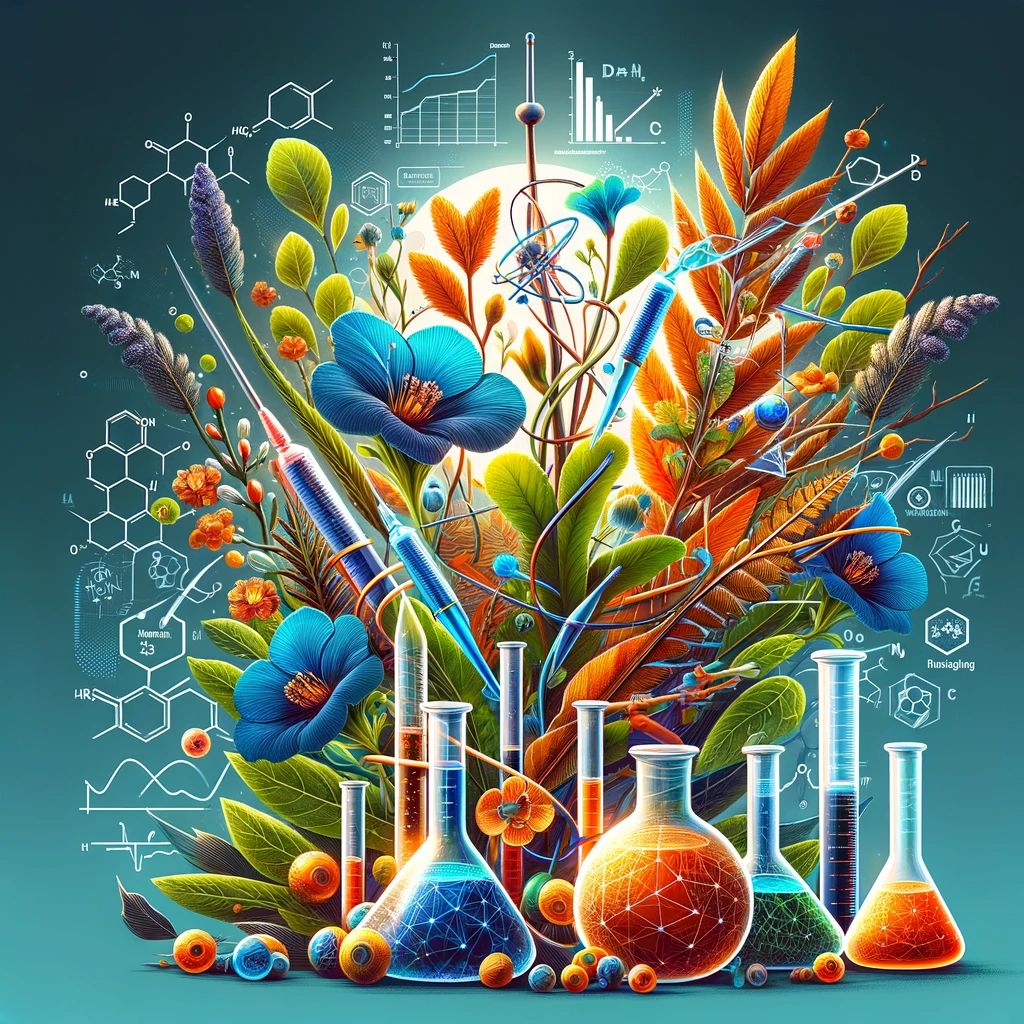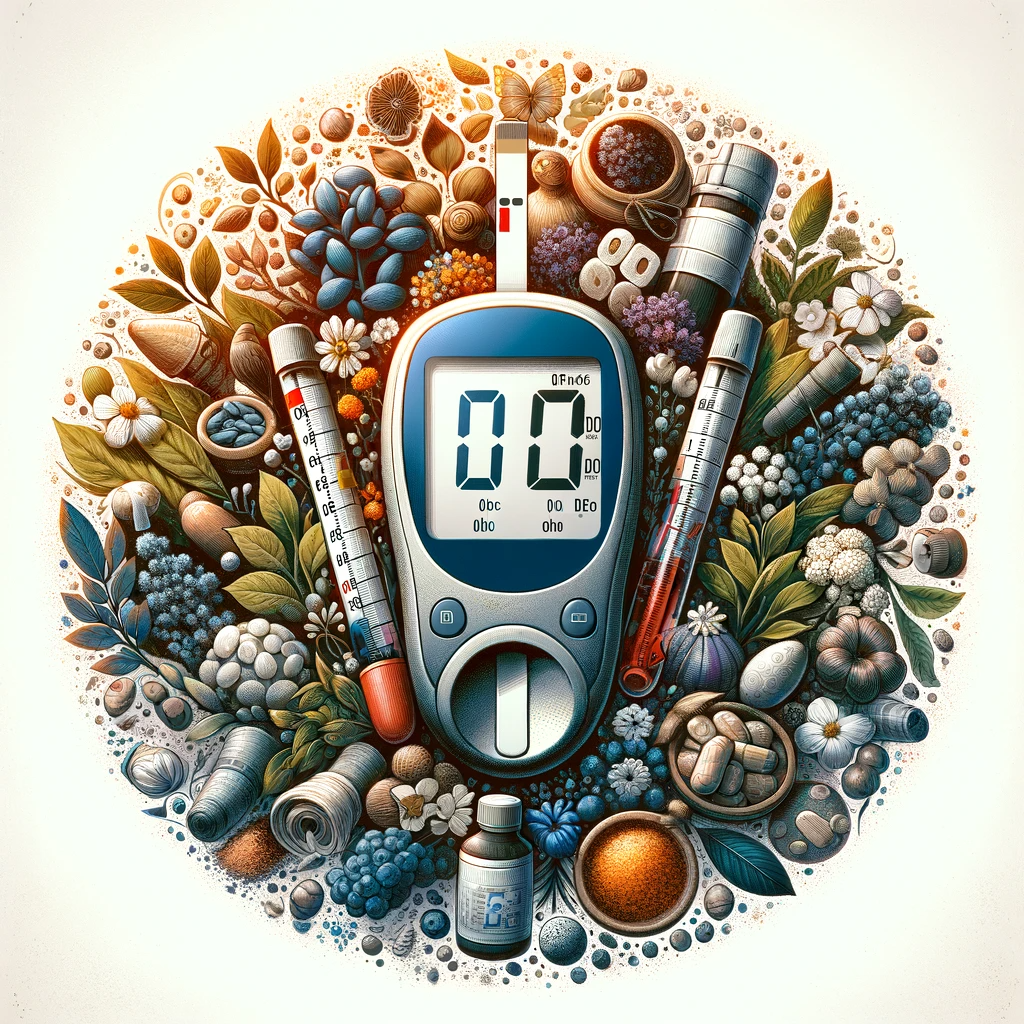People have used plants for healing since long ago. Some, like the Māori, know much about this. They use special trees and leaves to make sick people better.
Science now wants to learn from these old ways too. By studying them in labs, scientists can find out how they work against some sicknesses like diabetes type 2 (T2DM). This mix of new science and old knowledge could help many folks feel well using what grows from earth's ground while also honoring cultures that knew its power first.
- Natural Solutions for Diabetes Management
- Exploring Herbal Remedies for Blood Sugar Control
- Key Herbs in Fighting Diabetes
- Enhancing Health with Plant-Based Therapies
- The Role of Nutrition in Herbal Efficacy
- Lifestyle Changes to Support Herbal Interventions
- Safety First: Understanding Herb-Drug Interactions
- Monitoring Progress with Natural Treatments
- Building a Holistic Plan Against Diabetes
Natural Solutions for Diabetes Management

To tackle the rise of type 2 diabetes (T2DM) in New Zealand, researchers turn to traditional Māori knowledge. They focus on plants like karamu, kūmarahou, and kawakawa. These have been used for centuries by Māori for their health benefits.
Studies are now looking into these plants' anti-diabetic effects. But more research is needed to fully understand how they work against T2DM. Diabetes rates in New Zealand have soared over ten years, affecting about 10% of its population.
The impact hits harder among the Māori community—three times higher than others and starting at younger ages. The fight against T2DM isn't just medical; it's cultural too. Embracing mātauranga—the depth of knowledge passed down through generations—may hold keys to better management strategies that blend science with tradition.
Exploring Herbal Remedies for Blood Sugar Control
In recent strides, diabetes management has seen a shift towards high-tech solutions. Insulin, once sourced from animals like pigs and cows, now uses cutting-edge methods to mimic human insulin more closely. Today's treatments range from rapid to long-acting insulins tailored to individual needs.
Significantly, the introduction of insulin pumps marks a leap forward. These devices provide constant insulin delivery directly under the skin through small tubes. They're set up for real-time adjustments mimicking healthy pancreas functions.
Moreover, advancements in continuous glucose monitoring (CGM) systems within some pumps offer instant blood sugar data aiding better control. Research is pushing boundaries with implantable devices. These aim to automate insulin delivery based on real-time glucose levels, using algorithms that manage and predict blood sugar shifts, and offer personalized dosing or lifestyle advice.
This evolution also brings about affordable treatment options such as Admelog (biosimilar of Humalog), enhancing accessibility for patients needing regular insulin therapy.
Key Herbs in Fighting Diabetes

Herbs show promise in fighting Type 2 diabetes, a condition marked by high blood sugar and insulin issues. Studies highlight herbs' potential to tackle inflammation seen in this disease. They can reduce harmful cytokines like IL-1β, IL-6, TNF-α that spike in such cases.
Not just stopping at inflammation, these plants also help manage blood fat levels while keeping glucose in check through natural means. This approach steers clear of the common drugs often tied to side effects or surgical interventions—favoring a more body-friendly method instead for those aiming to keep their sugar levels under control without relying heavily on conventional medicine's tools.
Enhancing Health with Plant-Based Therapies
Turning to plant-based therapies marks a shift towards natural health solutions. Research shows these methods often carry fewer side effects, making them appealing for long-term wellness strategies. For instance, studies highlight how certain herbs can boost immune function or reduce inflammation in the body.
Moreover, incorporating plants like ginger and turmeric into daily routines has been linked with improved digestion and relief from chronic pain. Professionals suggest starting small with one or two herbal supplements after consulting healthcare providers to ensure they complement existing treatments without causing harm. It's also vital to source herbs from reputable suppliers to guarantee safety and efficacy.
Experts emphasize the importance of patience; benefits from herbal remedies may take time to manifest fully. As interest in holistic health grows, so does evidence supporting the use of plants in managing well-being effectively while minimizing reliance on pharmaceuticals.
The Role of Nutrition in Herbal Efficacy

Herbal remedies play a big part in healthcare for many across the globe. Up to four billion people, or 80% of those living in developing areas, count on such natural products for their health needs. This reliance is deeply rooted in tradition and culture.
In richer lands like the UK, North America, and parts of Europe and Australia, herbal treatments have also gained ground. People there believe these options support better health than conventional drugs do. Yet with this rise comes serious safety worries due to unchecked use and unproven effects of many herbal medicines.
The reality that some herbs can mix badly with traditional meds adds to the risk. The challenge then lies not just in harnessing herbs' true potential but ensuring they're used rightly without harm—an objective demanding strict checks by regulators worldwide to guard public well-being effectively.
Lifestyle Changes to Support Herbal Interventions
When choosing herbal medicine, one must be cautious, especially with online purchases. The lack of regulation can mean some traditional folk remedies don't meet the quality and standards of regulated medicines. Herbal treatments rely on plants for healing and general health benefits.
Given their potency, herbs should be treated with respect akin to pharmaceuticals; for example, digitalis from the foxglove plant is key in heart medication. Active ingredients are crucial in both herbal and conventional medicines; however, isolating these compounds can sometimes reduce effectiveness or safety—a concept well-understood by herbal practitioners but challenging due to dosage measurement issues. Herbs like dong quai offer relief from women's health complaints while others target different ailments effectively.
Yet caution is advised as interactions with prescription medications—like St John’s Wort impacting birth control—are possible risks. To support herbal interventions successfully:
- Familiarize oneself thoroughly before using any herb,
- Consult healthcare professionals regularly,
- Always ensure sources are credible. This approach respects both ancient wisdom and modern concerns about wellbeing.
Safety First: Understanding Herb-Drug Interactions
In the realm of herbal remedies, safety tops all concerns. These natural treatments come from plants and serve to either prevent or treat diseases. However, not every herb sits well with prescription drugs.
This clash is known as an herb-drug interaction which can alter how medicines work in your body. Before diving into any herbal supplement use, a chat with a healthcare provider is crucial; they guide on possible drug interactions you must avoid. For instance, during surgery or when managing blood pressure issues, certain herbs might cause complications by affecting anesthesia efficacy or altering bleeding risks.
The FDA oversees these products but doesn't apply the rigorous standards used for conventional medications since it classifies them as dietary supplements rather than drugs. Hence, despite their "natural" label," some could be unsafe if mixed without professional advice—especially under medication for other health conditions.
Monitoring Progress with Natural Treatments
To gauge success with herbal remedies, close tracking is key. Start by noting health specifics before beginning the treatment. This includes energy levels, sleep quality, and any discomfort.
As days pass while using these natural options, keep a log of changes seen in these areas. Improvement or lack thereof should be clear over weeks. Consulting healthcare providers about this journey ensures safety and proper guidance; they can spot nuances not obvious to most people.
They also help validate progress made through tests when needed. Research backs up many herbs' benefits; however one's body may react differently from another's making personal observation crucial for assessing effectiveness accurately. Efficacy varies widely among individuals.
Patience during this process is crucial.
Building a Holistic Plan Against Diabetes
In addressing diabetes, a critical condition affecting many worldwide, it's essential to explore all potential solutions. Recent studies focus on karamu, kūmarahou, and kawakawa for their anti-diabetic properties. However, despite promising early results, deeper molecular study is needed to fully understand how these plants aid in fighting diabetes.
Te Reo Tipu Research offers a kaupapa Māori framework suited for such investigation into taonga flora. This approach respects cultural knowledge while seeking scientific validation. New Zealand faces a growing challenge with Type 2 Diabetes Mellitus (T2DM), seeing cases double over the last decade.
The impact extends beyond those diagnosed to include families and caregivers as part of the wider affected community—representing about 10% of New Zealand’s population. The financial strain is also notable. Costs related to T2DM are predicted to rise significantly within five years.
Addressing this epidemic requires understanding its complexities. Insulin resistance mechanisms are linked with lifestyle factors. These factors, such as diet changes post-European settlement among Māoris, have led to higher rates of T2DM due to shifts from traditional food and activity practices.
Discovering the full benefits of herbal remedies opens new paths for health and wellness. These natural gifts offer gentle yet effective help against many conditions, including stress and chronic diseases. As people look towards holistic approaches, herbs stand out for their low side effects and cost-friendly nature.
However, it's vital to use them wisely under expert guidance to ensure safety. Embracing these plants can lead us back to nature's healing power, offering a promising addition or alternative to modern medicine in our journey toward better health.



